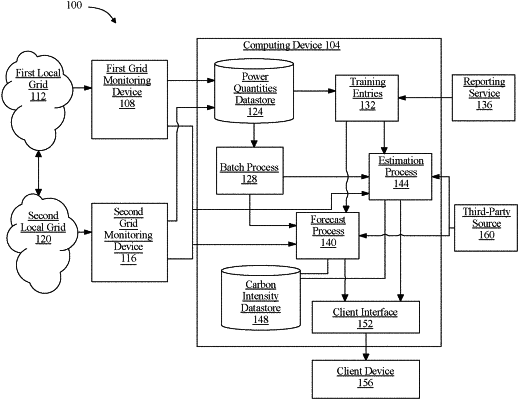| CPC G06Q 50/06 (2013.01) [G06N 3/08 (2013.01); G06N 20/00 (2019.01)] | 20 Claims |

|
1. A method of machine-learning for prediction of grid carbon emissions, the method comprising:
receiving, by a computing device and from a first local grid monitoring device monitoring a first local grid, a plurality of first power output quantities of a plurality of power generators in the first local grid;
receiving, by the computing device and from the first local grid monitoring device monitoring the first local grid, a plurality of first power consumption quantities of a plurality of power consumers in the first local grid;
comparing, by the computing device, the plurality of first power consumption quantities to a consumption baseline;
estimating, by the computing device, an avoided emissions as a function of the comparison;
generating, by the computing device, a plurality of courses of action, wherein each of the plurality of courses of action are optimized for maximizing the estimated avoided emissions;
training, by the computing device, an emission projection machine-learning process using training data entries, wherein the training data entries comprise correlations of past power output quantities and past power consumption quantities with reported carbon emission data;
generating, using the emission projection machine-learning process, a first plurality of projected carbon emission rates, wherein each of the first plurality of carbon emission rates is generated as a function of a course of action of the plurality of courses of action, the first plurality of power consumption quantities and the first plurality of power output quantities; and
displaying, by the computing device on a user interface, a graphical comparison of the first plurality of projected carbon emission rates.
|